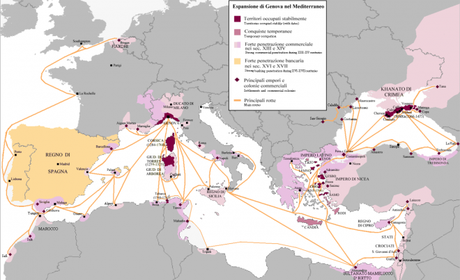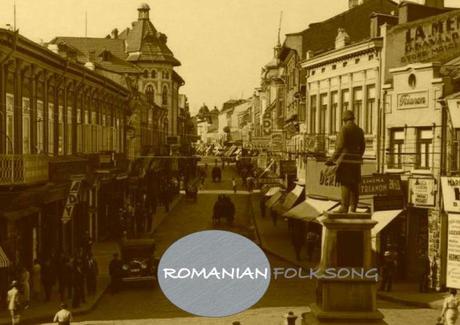
I. Like a Nijinsky Dance
The city of Galaţi was, some would say still is, an unprepossessing place. This Romanian thoroughfare for such commodities as timber, cereal, and livestock was of sufficient interest for the British to have a Consulate there since before the Crimean War, around which an attractive, easy-going atmosphere of laissez-faire had formed. Eventually, the glitzy social whirl fled to avoid the exigencies of the German blitzkrieg of 1944. Yet, despite her own self-denial, it was in the low-lying, fish-smelling, trawling port of Galaţi in the Lower Danube that even the indomitable secret agent Vera Atkins spent her childhood and school years, before turning into a spy—the Romanian Mata Hari who inspired Ian Fleming’s character, Miss Monneypenney. This was also where, in 1964, FC Oţelul Galaţi was founded, a team which is now set, ironically enough for the town’s illustrious “spymistress,” to bring its Carpathian brand of soccer against the mighty power of Manchester United.
The city of Galaţi was not, at first glance, an obvious place to become acquainted with either football or wild nature—but first glances are often misleading. Back in the 1940s and 1950s this essentially flat port was crisscrossed with drainage ditches, and war bombing had drastically decimated the population. Some children would venture out around the drains with fishing nets and jam jars to trap stickle-backs, tadpoles and frogs; their parents, watching from a far and adapting to Galaţi’s commensurately cosmopolitan upbringing, would try hard to put a smoke screen over the humble origins of their kids. (Even among Jews themselves, there was a strong preconception—an indelible mark of the prevailing anti-Semitism of 19th century Europe—whereby German or English origins were ‘superior’ to the East European roots.)
These modest waterways, filled with scorpions, dytiscid beetles, the occasional plunges of the purple heron, as well as a range of riverside plants, were the same boggy banks that, under different historical circumstances, gave out murmuring and weeping for the pensive head of Mihai Eminescu, a Romantic poet who shielded his sweet ecstasy under a locust-tree, smiling as if in a dream. That the city was also richly endowed with bomb sites—decaying rubble overgrown with weedy plants—meant that a rolling soccer ball would crush swaths of rose-bay willow herb and the fat green larvae of the elephant hawk-moths that fed upon them. Here were nesting finches and redstarts, jackdaws and thrushes; and here too was an ever-increasing range of footballing options as Romanian nature reasserted itself once soil and space became available.
During the childhood of FC Oţelul Galaţi all of this gradually disappeared. The open drainage ditches were piped and covered, the bomb sites progressively cleared, and the city gentrified. Vagabonds and derelicts from the Balkans, Greek smugglers, the semi-darkness of street restaurants and the fear-and-trembling posture of the original manuscript of Thomas Mann’s Buddenbrooks were all part of the landscape in which even the characteristic fishy smell of Galaţi gave way to a progression of some among the most valuable institutions one would want to have behind a soccer team—shipyards, cranes, a steel Hades.

A Double Portrait of the Purple Heron and the Common Crane
II. Hull and Galaţi: A Tale of Two Cities
The mud fell from their thighs, like placenta from a baby. —Bruce Chatwin, The Songlines (1986)
In those post-Second World War years, both Britain and Romania had great need of a meritocracy to cope with the ever-increasing technical demands of the modern soccer world. They did this through a competitive system that often blighted the lives of the formally unsuccessful. However, they did create an opportunity that would previously have been totally out of reach to those clubs with class background as unpretentious as Hull City or Oţelul Galaţi. It is this opportunity, finally, that suggests me to undertake a brief historical sketch of these two teams, essentially an essay of parallel lives, moving from the foggy flatlands of Hull to Galaţi’s blurred scenario of metamorphosis between the freezing Romanian steppe and the music of a gypsy violin.
The Hull City Association Football Club was one of many such associations in the North of England that could trace their origins back to Victorian times and the “scientific” fervor engendered both by the industrial age and by the post-Darwinian revolution in natural history. By the turn of the century it had its share of professionals, but they remained, not surprisingly in this working-class town, a minority. The sport scene was then dominated by rugby. Unable to apply for membership of the Football League, the club played its first ever game on 1 September 1904, a 2-2 draw in a friendly match with Notts County at The Boulevard with 6,000 in attendance. The players rubbed shoulders at each monthly meeting and weekend excursion with the true amateurs, teachers or sailors, who spent their lunch hours (similar to our dinner times) recording the butterflies and birds on the waste ground. Ambrose Langley, a full-back from Horncastle who, despite suffering a rib injury, turned himself into the pioneer figure of Hull City’s player-manager for nearly a decade, would sit there, I think, discussing with the workers issues of top flight football within the dock precint: he would do all the talking, as blunt a Yorkshireman as you could ever find, while the others would catch the train or bus to Bridlington on the mere rumor of a gull in the harbor. On one memorable occasion, when Hull City came closer to promotion in the 1909-10 season, Langley must have traveled from the cricket stadium to the ploughlands to see the Common Crane, which had turned up seriously lost from its Russian migrations, just like he felt himself from breathing a different air out of the Second Division.
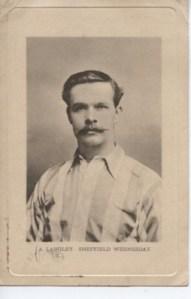 Langley was an avid note-taker, and his period at Hull City, when he completed the great task of making the team look competent, coincided with geological surveys of the pre-glacial beaches that had been exposed at Sewerby near Bridlington and at Hessle near Hull. (These were sites of great interest, actually, which yielded remains of mammoth, rhinoceros, hippopotamus, bison, deer, and other animals associated with paleolithic characters in England.) All that inchoate information one absorbs through these sister-groups, football and geology, gives a logical framework of anatomical simplicity, as if both players and zoologists may represent a highly derived version of much more complex ancestors. This, it seems to me, is one of the great joys of keeping the study of these aspects intertwined.
Langley was an avid note-taker, and his period at Hull City, when he completed the great task of making the team look competent, coincided with geological surveys of the pre-glacial beaches that had been exposed at Sewerby near Bridlington and at Hessle near Hull. (These were sites of great interest, actually, which yielded remains of mammoth, rhinoceros, hippopotamus, bison, deer, and other animals associated with paleolithic characters in England.) All that inchoate information one absorbs through these sister-groups, football and geology, gives a logical framework of anatomical simplicity, as if both players and zoologists may represent a highly derived version of much more complex ancestors. This, it seems to me, is one of the great joys of keeping the study of these aspects intertwined.
The abilities to read a great mantle of boulder-clay, to decipher and retain patches of gravel and sand in the earlier site adjacent to the Cricket Ground as well as when the soccer team took up residence in its current home, Boothferry Park, and to regurgitate all of this at great speed in essays and practical drills were equally essential for Hull’s development as a city of naturalists and footballers. Transferring these skills to the educational arena was easy. The constant creative writing associated with keeping a diary no doubt also helped. The coach’s need to record his thoughts in a few telegraphic words on a label and the biologist’s feelings for capturing the events surrounding an experience (whose narrative form led to the fine art of journal writing) were both so remarkably clear as to become almost commonplace. There was a great deal of chicken-and-egg in this interaction between natural history and a formal soccer education, but even though there are no lists, no appended memorabilia and, perhaps most important, no drawings, there could be little doubt that for either institution it was the emphasis on fieldwork for evidences on man’s handiwork that essentially linked an inferior goal average—which is the reason why Hull City missed out on promotion to Oldham Athletic in 1910 by the narrowest of margins—to the collection of notes contained in Thomas Sheppard’s pamphlet, Geological Rambles in East Yorkshire, published in 1903 to urge the study of mammoth teeth, fossil tusk, and bones.
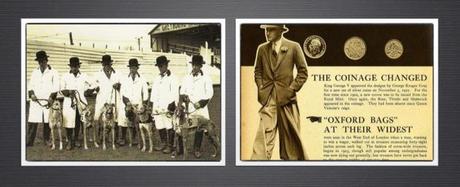 It was also through these rather dry technical requirements, whose imperative of scientific prose is fixated in the common advise “if it’s not published, it’s not done,” that sports events in Oxford such as the many water regattas, the opening of a betting facility related to greyhound races, or the invention of the “Oxford Bags” pants just overlapped with the creative period and zoological qualifications of Charles Elton, the father of animal ecology in the English-speaking world, whose 1927 book Animal Ecology remained for years essential reading for budding ecologists.
It was also through these rather dry technical requirements, whose imperative of scientific prose is fixated in the common advise “if it’s not published, it’s not done,” that sports events in Oxford such as the many water regattas, the opening of a betting facility related to greyhound races, or the invention of the “Oxford Bags” pants just overlapped with the creative period and zoological qualifications of Charles Elton, the father of animal ecology in the English-speaking world, whose 1927 book Animal Ecology remained for years essential reading for budding ecologists.
All of the subsequent experience of Yorkshire biologists and footballers gradually converged into a two-layered process of documentation, inked, as it were, with two sets of different brushes. For a start, a simple exercise of disambiguation might still prove more durable than the electronic data in laptop-based spreadsheets. So one is introduced to Thomas Sheppard the cricketer, a man who made his debut at Hull in August 1905, scoring 17 in a match in which play was possible on only one of the three scheduled days; and in the same infrastructure one also meets the other Thomas Sheppard, author of the Geological Rambles mentioned above, a young man who was appointed curator of the Hull Municipal Museum in January 1901 and described his job with a nice touch of English understatement: “I was instructed to come to the museum at ten o’ clock each morning, smoke my cigar, leave at four o’ clock, and if anybody wanted any information to give it to them, and if any gifts were made to accept, but I had to incur no expense.”
The Sheppards eventually had to cope with alcoholism, a weak heart, and the bombings of the Second World War. Both Thomases, moreover, came of age at a time in which the team of Hull City was playing in a national League that had reshaped itself into a regionalized structure and in which a geologist digging glacial drifts and estuarine deposits would be able to unearth a deformed specimen of belemnite or a Dentalium giganteum. Meanwhile, The Tigers, a nicknamed adopted for their amber and black striped shirts, enjoyed no major success and had to rely heavily on ‘guest’ appearances to be able to fulfill their fixtures.
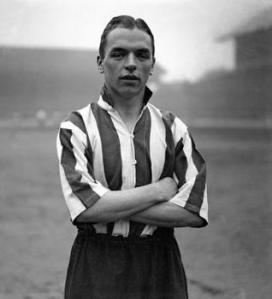 Quietly, glimmers of light amidst financial and technical troubles were starting to be seen. Expectations to reach the holy grail of First Division under the guidance of Horatio Stratton Carter, one of the best footballers of the time, were suddenly high—there have been at least two full cycles of rise and decline since then—and in 1949 the club established their never beaten record of attendance, when they played a top-of-the-table clash against Rotherham on Christmas Day in front of a roaring crowd of 49,655 spectators. As forbidding and unimaginative as it may seem, this was a course of action that was essentially unchanged, for Hull, from when it was first designed by Ambrose Langley and from when the great naturalist T.S. put his ornate initials on the teaching specimens of the Municipal Museum through every phylum of the animal kingdom (with bits of botany and chemistry thrown in by neighboring departments). It was the generosity of the earlier generations, the “scientific” fervor of soccer and biology masters that literally created the future of Hull City.
Quietly, glimmers of light amidst financial and technical troubles were starting to be seen. Expectations to reach the holy grail of First Division under the guidance of Horatio Stratton Carter, one of the best footballers of the time, were suddenly high—there have been at least two full cycles of rise and decline since then—and in 1949 the club established their never beaten record of attendance, when they played a top-of-the-table clash against Rotherham on Christmas Day in front of a roaring crowd of 49,655 spectators. As forbidding and unimaginative as it may seem, this was a course of action that was essentially unchanged, for Hull, from when it was first designed by Ambrose Langley and from when the great naturalist T.S. put his ornate initials on the teaching specimens of the Municipal Museum through every phylum of the animal kingdom (with bits of botany and chemistry thrown in by neighboring departments). It was the generosity of the earlier generations, the “scientific” fervor of soccer and biology masters that literally created the future of Hull City.
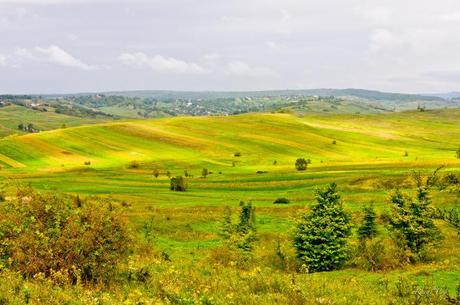
Somewhere near Nadisa (Photograph: Raul Pop)
Finally, while the deep-sea fishing industry in England fell victim first to Icelandic assertion of marine territoriality (the so-called Cod Wars of 1958 and 1972) and subsequently to changed rights of access associated with membership in the European Union, the city of Hull moved toward a much more challenging cultural dynamic: one that proved to be dramatically fruitful. During naturalist expeditions, youthful collecting was discouraged, even though it almost never had any serious conservation impact; during football training, on the other hand, technical skills were honed in ways that were largely unforeseeable by the early mentors. Inveterate collectors of birds’ eggs, shells, fossils, wildflowers, fungus spore prints, feathers, and so on, were substituted by factory workers smoking on the shore, and from the city’s steel mills came also new waves of supporters for the Tigers. Steel mills and football come together again into one powerful stream at Galaţi, as befits a city with such flourishing trade and industry, and a river-port that is one of the busiest and most bustling in the Danubian frontier with Russia.
An Englishman from Yorkshire may embark into a birding tour, hoping to see strays from Siberia or to peek into North American life, which is at least as rich as the checklist cards published by the National Audubon Society (whose headquarters are, curiously enough, located in the Greenwich Village of Manhattan), as the conscientious French ornithologist and musicologist Olivier Messiaen amply demonstrated in his transcriptions of birdsong and dance patterns. Yet Galaţi is a place where the “everyday” birds, utterly different from those in most of Eastern Europe, occur in mind-blowing concentrations.
Such an approach is unfathomable to most naturalist or footballing birders, but it represents the listing approach of FC Oţelul Galaţi, taken to its extreme. So belated a focus on soccer as a game—the club was founded only in 1964—can have a less than desirable impact on the person playing the game and can hardly be better than neutral or irrelevant for the community at large. Oţelul, meaning approximately ‘steel’ or ‘power,’ plays in red, white and blue and is currently managed by former Romania international Dorinel Munteanu. Surpassed only by FMC Bacău among the Moldavian teams and wounded during a brief stint of fighting with its town rivals, Dunărea, Oţelul has managed to emerge as the main footballing force of the region, booking several seasons of European competitions. In the first of these, in 1988, they debuted with a 1-0 victory, thanks to a penalty transformed in the second half by midfielder Profir, against Juventus, a mighty team, then managed by Dino Zoff, with a similar social background in the suburbs of Turin—a play of factory allegiances and steely mirrors reflecting one another.
During the team’s European performances, certain merciful debilitations in the vocabulary of the radio commentators take place, and one can always persuade oneself that Oţelul Galaţi is enwrapped in a wall of glass, sometimes even clumsy and comical, separating the club from the sounds of the outside world. Over the years, Romanian midfielder Liviu Antal has become a figure of conviction. Immune from nocturnal slaughter, Antal rides beyond the threshold, in the vanishing dazzle of the right wing, like a Thracian horseman sees the clearing of the sun on Mount Snežnik, morning vapors freshly lifting from the grass.
The Oţelul winger played poorly against Benfica, a team which shapes itself up with tortured insolence—like a vanguard artist trying to solve problems of oil painting in bronze—and is often gorgeous to watch, when it doesn’t yield to the sly naivety of convoluted goalscoring plans. Antal looked harmless, puffing and panting like a Frisian peasant. He looked ineffectual, slipping by like a canebrake on the Danubian banks. Succumbing to reddish waters of sea-weed and ooze was a bad idea, especially since his locks of fiery blonde hair were supposed to lead his fellow Romanian Argonauts to anchor themselves on the Colchis of Champions League soccer, after their return from industrial suburban squalor. (In the boundless, heartfelt nostalgia of the after-match, Munteanu himself would lament that many of his heroes had fallen off the chariot into colorless bogs of fear.) The presage of the end in the group stages, however, is still tranquil and majestic, rich with the fertile vitality of the river delta, where the Danube merges with the meadows in a vast, inextricable jungle of water, with overhanging trees, liquid caverns, and deep pools of dark, green and blue.
Benfica’s tactics, as seen in Bucharest, appear to have suffered a period of intense rationalization to be in touch with the modern times. For the most part, the players look either like a 4—2—3—1 shape, a sporadic 4—3—3 formation, or a hybrid combination of the two; the team’s penchant is a drift toward ‘organic unity’, as recommended by Maurice Maeterlinck, the bard of The Life of the Termite. Even the coach, Jorge Jesus, if he had a few minutes of glory in the Soccer Parnassus, he’d presumably hold conversations at court, exclaiming: “And the hero of the match is always busy like a bee!” To be in tune with the times, however, is a painstaking exercise. By inflicting to themselves a higher demand of design ethics, Benfica is stuck in a particular punctuation, where the commas and the semi-colons that subdivide the flow of sentences are all passes from the left foot, which the players are constantly trying to cut across as if in a pool table. (If one could isolate a vignette from the whole, it would be fair to say that the Portuguese won their match against Galaţi because midfielder Nico Gaitán, alongside such stuttering speeches, performed a sit-deep-and-wait strategy with the perfection of an amphibian lizard in the tropics.) Oţelul, on the other hand, look like a Danubian cormorant that has opened its wings like a crucifix to dry off a loose coinage of life; a Pannonian naturalist would have a hard time to count its bones and scales, and to observe and distinguish between the flying-feathers and the steering-feathers of such a bird.
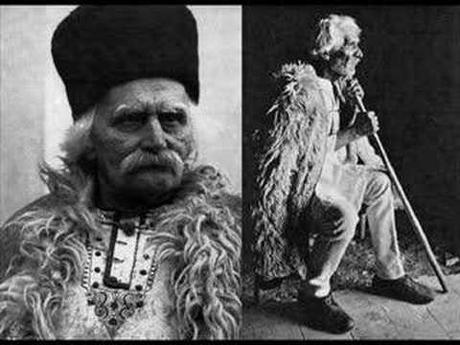 III. A Footballing Eden in Ruined Landscape
III. A Footballing Eden in Ruined Landscape
For miles on end, in these parts, there are entire villages with illiterate inhabitants, communities which are not linked by any railways or roads; here, most of the time the people can provide for their own daily wants. . . When one comes into such a region, one has the feeling of a return to the Middle Ages. —Béla Bartók, Romanian Folk Music (1933)
At Galaţi, the Danube turns sharply east and becomes the boundary to Russia. It is surrounded on both sides by large lakes and undulating country with extensive and beautiful deciduous woods of Quercus pubescens. Beyond the oaks, there is a decreasing, incessant regeneration of branches and rivulets, reeds and herons—a laboratory of forms of life; and beyond these ramifications, there are Marshal Tito’s passion for geometry and the regulatory heritage of Count István Szécheny, patriarch of the Hungarian national resurgence and the pioneer of communications in south-eastern Europe. A striker in ‘false nine’ position swoops around the opposite centre-backs like a vulture over uprooted oak-tree logs floating and rotting in the water, but the lone-striker of Oţelul seems rather like a girl who takes off her sandals and dangles her legs over the side of a boat.
As often occurs with men in revolt against footballing vitalism, the Champions League fixture between Benfica and Galaţi had far-reaching consequences and could be rewritten in avant-garde terms, as if, paradoxically, their default 4—2—3—1 was parallel to the Viennese principle that all twelve chromatic notes have an equal call on the modern coach and spectators. Sure enough, the match was bound to provoke an opposition between Benfica’s predilection of the Parisian neo-classicism of a Stravinsky and Oţelul’s understandable choice of the folk-derived method of a Béla Bartók.
Bartók himself worked extensively with Romanian folk-tune material, crashing together vanguard piano style with peasant songs (which he recorded out in the field) and working through the implications of a method based on combining the two elements. The collection of Romanian Folkdances of 1916 represents a sound he would pursue over the course of many years, the same sound which was greeted in Budapest with ‘polite applause’ in the chauvinistic mood of the authoritarian Horthy era.
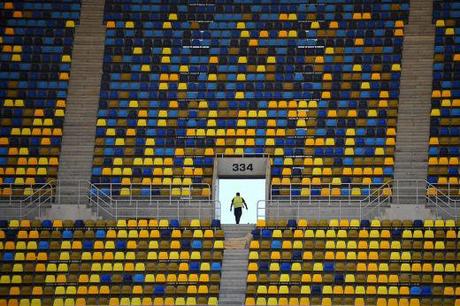
Manoliu Arena, Bucuresti
The problem with Oţelul Galaţi is that the team, for now, offers so few splashes of good football that it is impossible to put forward a typical evolutionary theory on the logic of atonality and argue the case for a soccer notation free from sharp- and flat-signs (the zonal marking positions on the pitch). No matter how faulty or skeletal the squad’s theory actually was, the spectacle of the Champions League fixture against Benfica was in any event a Wagnerian convergence of visual and aural stimuli—an utopian race toward a future of total sensory immersion. Since the city of Galaţi does not have a stadium that could conveniently host the match, the players had to move from the Danubian borders, partly by car and partly with the club’s bus, to play in Bucharest as the ‘home side’. In the capital, only 6,000 tickets were sold: the same attendance, incidentally, of Hull City at The Boulevard in 1904. That night, the Manoliu Arena looked like a post-impressionist dome with Seurat’s split colors; the empty seats formed a chromatic scale of hues, invoking soccer’s capacity to mould moods and to stir emotions.
Even though the stadium-goers in Bucharest dismissed, perhaps by thinking like loyal local fans, the Moldavian footballing hotchpotch of Oţelul Galaţi, their performance among empty and colorful seats became sublime and magical, its emotional key being the ultimate synaesthesia machine. Soccer turned into a three-dimensional, time-based spectacle featuring music, lighting and a succession of shifting architectural forms: actors and living creatures were not banished, as in some extreme experiments of Gesamtkunstwerk, the ‘total artwork’, but inessential. Galaţi playing in Bucharest’s deserted Manoliu Arena truly recalled Giovanni Segantini’s unrealised plans for a 200-yard-long painting of the Swiss Alps, which called for a specially designed building and appropriate sound effects.

Kupka, Amorpha, 1912
Can anyone imagine anything in the soccer arts which would surpass the visible rendering of sound, which would enable the eyes to partake of all the pleasures that music gives to the ears? That would, it’s easy to admit, be quite a spectacle. If it is going to happen at all, it is most likely during the futurist frenzy of the early Champions League stages, when coaches spend much of their time creating a system for synchronism and jersey-colors take on a spiritual dimension: Galaţi’s red-white-blue stand for martial, blatant, self-satisfied and harsh.
The fusing of art and football reaches its apotheosis in the fugue, in which melodic lines chase each other in varying patterns. Take, say, a Braque canvas or a Hull City match from 1911, remove the ‘pictorial’ fragments—the metro tickets or the full backs tracking long balls—and you’re left with patterns and structures comparable with the organization of a fugue. In his mind-bending Amorpha: Fugue in Two Colours, of 1912, František Kupka develops ribbons of intersecting blue and red (the hues of Oţelul’s shirt) like two voices in a duet, brilliantly modulating, through illusory space, a feeling of immersion and totality. Yet, this was also the age of graphic scores, in which the instruction book for footballing performances, made of thrusting lines and curvilinear flows, bears the strongest resemblance to either yarn-spinning or story-telling. At Galaţi, the carpets, the bazaars, and the throng of prostitutes are long gone—the eclectic, multicolored world of yesterday transcended into the Romanian ambition to become independent of the Soviet Union.
If seen against the backdrop of the river delta, in which it is impossible, with the vegetation climbing and twisting everywhere, to tell the soil from the water and the sky, Oţelul’s sloppy performance against Benfica becomes a mourning metaphor for what the city of Galaţi has turned into: from a hubbub for Bulgar exiles and patriots, the Chăšovi, preparing for the Revolution through interminable nocturnal discussions in the taverns of the town, to a great center of metallurgy and ship-building. Like an Eastern port, Galaţi’s noble yellow-ochre of the nineteenth-century style, with its neo-classical decorousness, its Art nouveau scrolls and caryatidis, yields to an undefined Levantine ambiguity. Oţelul’s soccer team is training for success in the dimmed alliance between a cloudless noon and the electric light, as between the confined spaces of Lenin Square, whose walls are pompously papered in red, and the watery droning of the Danubian banks. ♦
MORE ABOUT ROMANIAN GEOGRAPHY
This is a map of Galaţi, showing the extensive economic and cultural networks linking the area with the Republic of Genoa.
